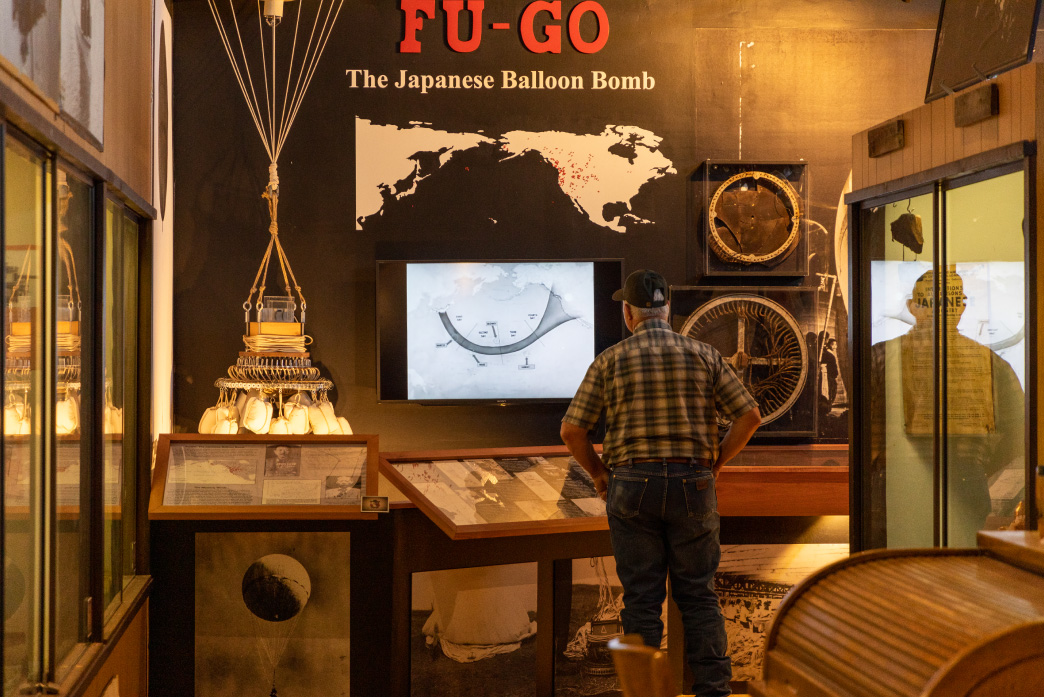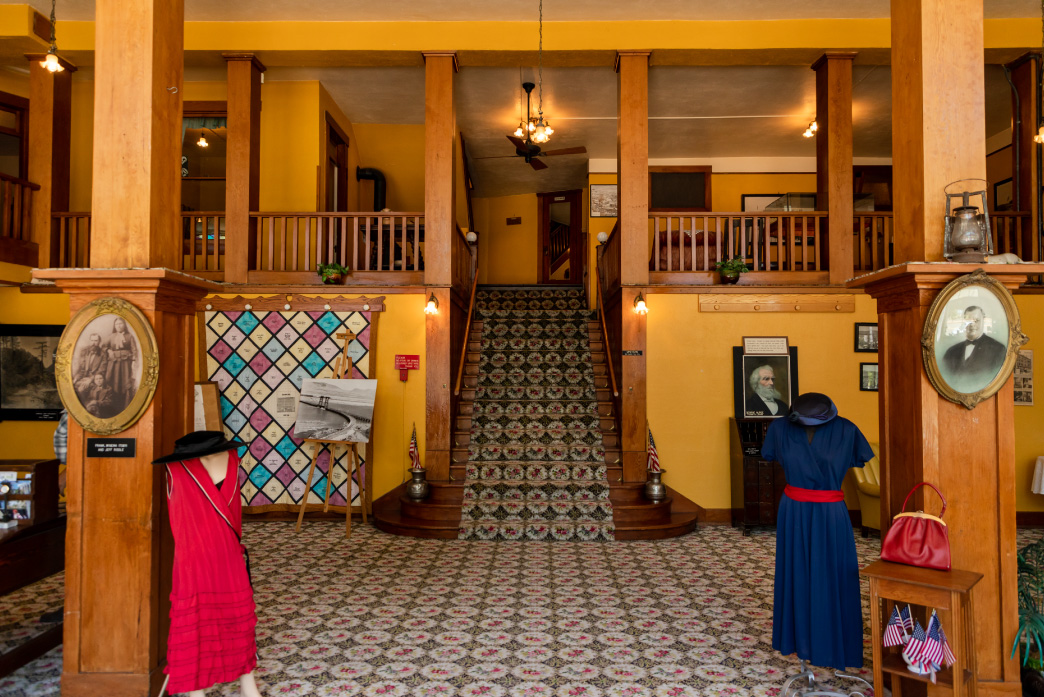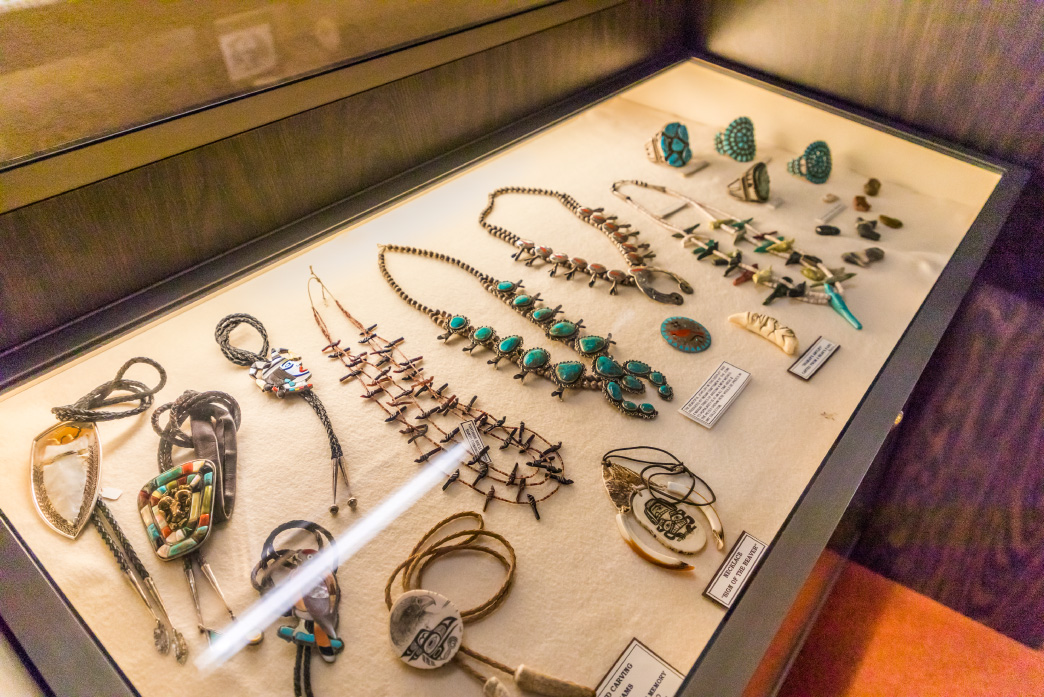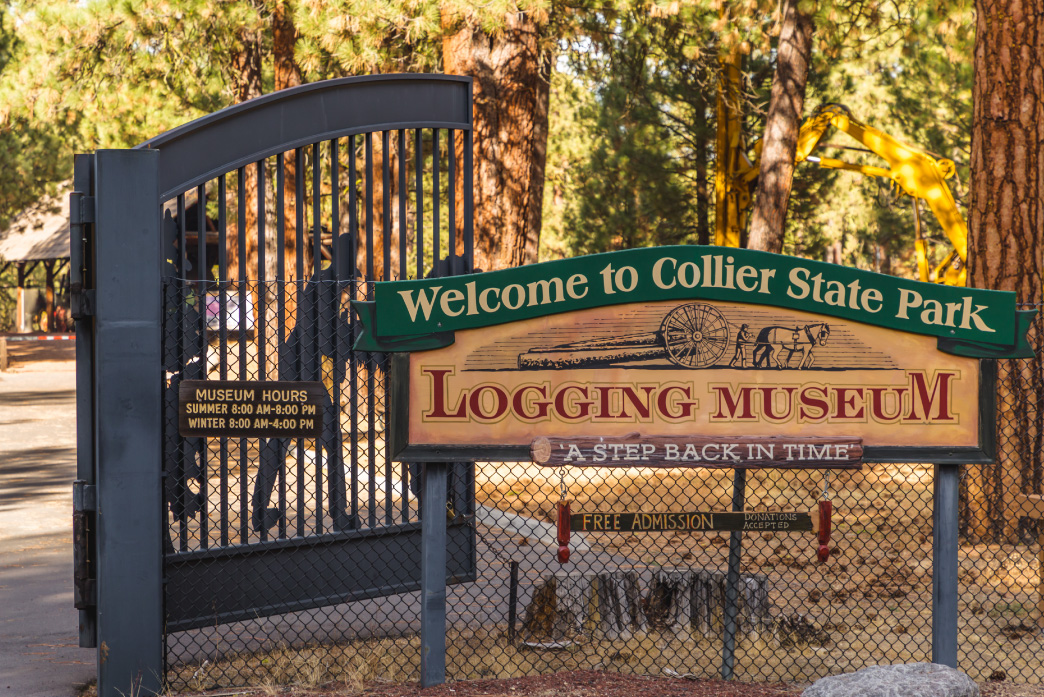10 Fascinating Museums Across Klamath County
You don’t have to look far to find fascinating history throughout the Klamath Basin. It’s under your feet at the Lava Beds National Monument, embedded in the logging equipment that powered the region to an industrial upheaval in the early 1900s, and found in the artifacts left behind by centuries of Native Americans and the area’s first European-American settlers.
That’s a lot of history to cover, so we’ve put together a guide to the region’s top museums. From cozy visitor centers to full-scale museums, these attractions take you into Klamath County’s past and teach lessons that inform our present and future. So if you want to dive into the region’s rich history on your next visit, here’s a guide to 10 fascinating museums across the Klamath Basin.
Lava Beds National Monument Visitor Center
At the southern edge of the Klamath Basin, Lava Beds National Monument sits atop the Medicine Lake shield volcano and is home to hundreds of caves, Native American rock art, battlefields, and other fascinating sites.
You could spend days exploring the park’s wonders (both above and belowground), so gather your bearings at the monument’s visitor center. There you can borrow flashlights for caving, peruse a small gift shop, and view exhibits that discuss the region’s natural and cultural history through artifacts and interpretive panels. Friendly rangers are also on hand to provide recommendations for hiking, caving, and other adventures throughout the monument.
When you’re ready to plan your trip, check out our guide to Lava Beds National Monument.
Tule Lake National Monument Visitor Center
Just north of Lava Beds is Tule Lake National Monument, where a seasonal visitor center hosts an exhibit about a shameful—but no less important—chapter in Klamath Basin history.
In all, the monument covers the Tule Lake Segregation Center (where Japanese-Americans were imprisoned during World War II) and Camp Tulelake (which held Japanese-Americans and eventually served as a prisoner-of-war camp). A small visitor center amidst it all discusses the rise of World War II, explains the impact that President Roosevelt’s Executive Order 9066 had on Japanese-Americans, and details daily life for Japanese-Americans at the camp and segregation center.
Note that the visitor center is generally open between Memorial Day and Labor Day; call ahead to ensure it’s open before visiting. Free guided tours are also available Thursdays through Sundays; would-be visitors can make reservations by calling 530-260-0537. Learn more about Tule Lake National Monument.
Klamath County Museum

Klamath County Museum’s Fu-Go exhibit: WWII’s secret Japanese balloon bombs—history, devastation, and resilience showcased through artifacts and personal stories. Discover Klamath
Explore centuries of Klamath Basin history at the Klamath County Museum. Housed in a former armory in downtown Klamath Falls, the museum is an excellent starting point for history buffs curious about the region’s vast history.
Its coverage spans generations, with displays that include artifacts from local Native American tribes, dioramas, vintage photographs, classic cars, and more; visitors can spend an entire day perusing the museum’s wide range of exhibits and still only scratch the surface of its offerings.
While you’re in the area, check out our guide to public art in downtown Klamath Falls—with several paintings and sculptures that offer a glimpse of the city’s past.
Fort Klamath Museum
In the early 1860s, scores of immigrants new to the Pacific Northwest clashed with Native American tribes that had lived in the area since time immemorial. So in 1863, the U.S. Army built Fort Klamath at the doorstep of the Cascade Range, roughly 40 minutes north of modern-day Klamath Falls.
The fort is long gone, but the Fort Klamath Museum tells the story of its construction, impact, and day-to-day life for soldiers at the fort. It is housed in a reconstructed guard house and features artifacts from the fort’s heyday (such as guns and officer uniforms), interpretive exhibits, a diorama of what the fort looked like, and more. Note that the museum is typically open Thursday through Monday, from Memorial Day to September.
Baldwin Hotel Museum

Step into history at Baldwin Hotel Museum: Experience the charm of the past through vintage furnishings, artifacts, and captivating stories of Klamath Fall’s early days. Discover Klamath
Since opening in 1906, the Baldwin Hotel has been an iconic site near the Link River at the edge of downtown Klamath Falls. The four-story, Victorian building welcomed guests through 1977 and has remained a draw in the decades since; today, it hosts day visitors as the Baldwin Hotel Museum.
The inventive museum comprises 40 rooms, each themed to reflect a different era or aspect of Klamath County history—and each filled with a variety of artifacts and exhibits (including phones, vintage beds, kitchen appliances, and more). One- and two-hour guided tours are available and provide fascinating context for the building’s history and its importance in Klamath Falls. Finally, note that the Baldwin Hotel Museum is open Wednesdays through Saturdays between Memorial Day and Labor Day weekend.
Favell Museum

Discover the artistry of Native necklaces at Favell Museum: A stunning collection showcasing cultural diversity, craftsmanship, and timeless beauty of indigenous traditions. Discover Klamath
Sitting on the western shore of the Link River, the Favell Museum offers a globetrotting look at Indigenous cultures from around the world—as well as contemporary artists enamored with the American West.
Much of the Favell Museum’s collection comprises more than 100,000 Native American and indigenous artifacts, some of which date back 12,000 years. Items include arrowheads, tools, beadwork, basketry, and pottery from cultures across North and South America. The rest of the museum spotlights work from more than 300 contemporary artists, each of whom pay tribute to the American West through oil paintings, dioramas, mixed media works, bronze sculpture, and more.
Collier Memorial State Park Logging Museum

Immerse yourself in the legacy of logging at Collier State Park Logging Museum: Vintage equipment, interactive exhibits, and forestry tales shed light on the Pacific Northwest’s timber industry history. Discover Kalmath
Collier Memorial State Park sits where Spring Creek and Williamson River collide, offering campsites, a scenic day-use area, and easy access to beloved fishing holes. But the park’s most popular attraction just might be its Logging Museum.
Open daily, the outdoor museum traces Klamath County’s timber industry through interpretive panels and a paved path that passes vintage equipment dating back to the 1880s. Exhibits and equipment examine the arrival of the railroad in Klamath County, explain the basics of logging, and explore the evolution of the timber industry over the decades. Today, the 146-acre museum is one of the largest collections of logging equipment in the United States.
Merrill Historical And Modoc War Museum
Tucked inside Merrill’s City Hall is the small, but impactful Merrill Historical And Modoc War Museum—where visitors can learn about a wide range of local history.
Much of the museum is dedicated to the Modoc War of 1872-73, where the local Modoc people fought the U.S. Army for nearly a year in the Medicine Lake lava beds; educational panels are accompanied by artifacts that include firearms and photographs from the area. Other exhibits pay tribute to Carl Barks, a Merrill native and celebrated cartoonist who created the character of Scrooge McDuck, and local settlers who made up some of the modern-day community’s earliest residents.
Malin Historical Society Museum
Of all the attractions in this piece, the Malin Historical Society Museum might host the most eclectic lineup of artifacts and exhibits.
Malin was first settled and developed by Czechoslovakian transplants (now the modern-day Czech Republic and Slovakia) in the early 1900s, and several artifacts pay tribute to Czech culture and its influence on the community’s earliest days. Other highlights include artifacts from local Native American tribes, a genuine mastodon tusk, and even a history of the museum’s building (which was a bank in the early 1900s).
Crater Lake National Park
Crater Lake is Oregon’s only national park and perhaps the biggest attraction in Klamath County—so if your visit to the region includes a stop at the park, brush up on its history and unusual geology with a trip to its visitor centers.
In all, two visitor centers can be found at Crater Lake National Park. At its southern entrance is Steel Visitor Center (closed until fall 2023), which shows a short film about the park and hosts a variety of educational exhibits. (Visitors can even purchase postcards in the gift shop—and mail them from the on-site post office.) Up in Rim Village, meanwhile, is Rim Visitor Center, a small outpost that shares the park’s history mere steps from Sinnott Memorial Overlook—where visitors enjoy dramatic views alongside a handful of interpretive panels.
Ready to visit? Get started with our guide to Crater Lake National Park, which details attractions suited to all four seasons, fun activities, the park’s history, and more.


